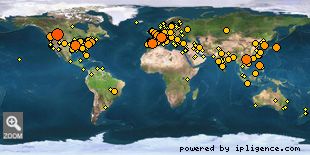 » NMR Jobs
» NMR Jobs |
|
|
|
|
|
|
 » Cool papers
» Cool papers |
|
|
|
|
|
|
 » NMR books
» NMR books |
|
|
|
|
|
|
 » NMR theses
» NMR theses |
|
|
|
|
|
|
 » NMR blogs
» NMR blogs |
|
|
|
|
|
|
 » NMR news
» NMR news |
|
|
|
|
|
|
 » NMR tweets
» NMR tweets |
|
|
|
|
|
|
 » NMR videos
» NMR videos |
|
|
|
|
|
|
 » NMR pictures
» NMR pictures |
|
|
|
|
|
|
 » Online Users: 131
» Online Users: 131 |
| 0 members and 131 guests |
| No Members online |
| Most users ever online was 1,278, 01-09-2024 at 07:38 AM. |
|
 » Welcome!
» Welcome! |
Welcome, NMR world!

Our visitors map.
|

 A methyl-TROSY based 13C relaxation dispersion NMR experiment for studies of chemical exchange in proteins A methyl-TROSY based 13C relaxation dispersion NMR experiment for studies of chemical exchange in proteins |
|
Apr 26, 2023 - 1:50 PM - by nmrlearner
|
 A methyl-TROSY based 13C relaxation dispersion NMR experiment for studies of chemical exchange in proteins
A methyl-TROSY based 13C relaxation dispersion NMR experiment for studies of chemical exchange in proteins
Abstract
A methyl Transverse Relaxation Optimized Spectroscopy (methyl-TROSY) based, multiple quantum (MQ) 13C Carr-Purcell-Meiboom-Gill (CPMG) relaxation dispersion NMR experiment is described. The experiment is derived from the previously developed MQ 13Cā??1H CPMG scheme (Korzhnev in J Am Chem Soc 126: 3964ā??73, 2004) supplemented with a CPMG train of refocusing 1H pulses applied with constant frequency and synchronized with the 13C CPMG pulse train. The optimal 1H ā??decouplingā?? scheme that minimizes the amount of fast-relaxing methyl MQ magnetization present during CPMG intervals, makes use of an XY-4 phase cycling of the refocusing composite 1H pulses. For small-to-medium sized proteins, the MQ 13C CPMG experiment has the advantage over its single quantum (SQ) 13C counterpart of significantly reducing intrinsic, exchange-free relaxation rates of methyl coherences. For high molecular weight proteins, the MQ 13C CPMG experiment eliminates complications in the interpretation of MQ 13Cā??1H CPMG relaxation dispersion profiles arising from contributions to exchange from differences in methyl 1H chemical shifts between ground and excited states. The MQ 13C CPMG experiment is tested on two protein systems: (1) a triple mutant of the Fyn SH3 domain that interconverts slowly on the chemical shift time scale between the major folded state and an excited state folding intermediate; and (2) the 82-kDa enzyme Malate Synthase G (MSG), where chemical exchange at individual Ile Ī“1 methyl positions occurs on a much faster time-scale.
... [Read More]
|

 0 Replies | 292 Views
0 Replies | 292 Views
|
|
 » BioNMR wiki
» BioNMR wiki |
|
|
|
|
|
|
 » NMR discussion
» NMR discussion |
|
|
|
|
|
|
 » NMR conferences
» NMR conferences |
|
|
|
|
|
|
 » NMR software
» NMR software |
|
|
|
|
|
|
 » Pulse sequences
» Pulse sequences |
|
|
|
|
|
|
 » NMR community
» NMR community |
|
|
|
|
|
|
 » NMR presentations
» NMR presentations |
|
|
 » NMR web resources
» NMR web resources |
|
|
|
|
|
|
 » NMR feature requests
» NMR feature requests |
|
|
 » NMR bookmarks
» NMR bookmarks |
|
|
|
|
|
|
 » Stats
» Stats |
Members: 3,202
Threads: 25,763
Posts: 26,149
Top Poster: nmrlearner (23,207)
|
| Welcome to our newest member, bpadmanabhan |
|



